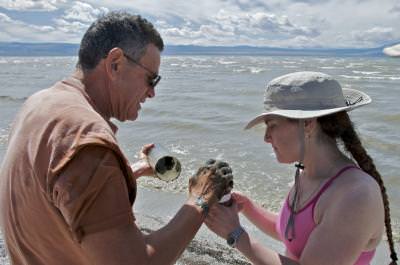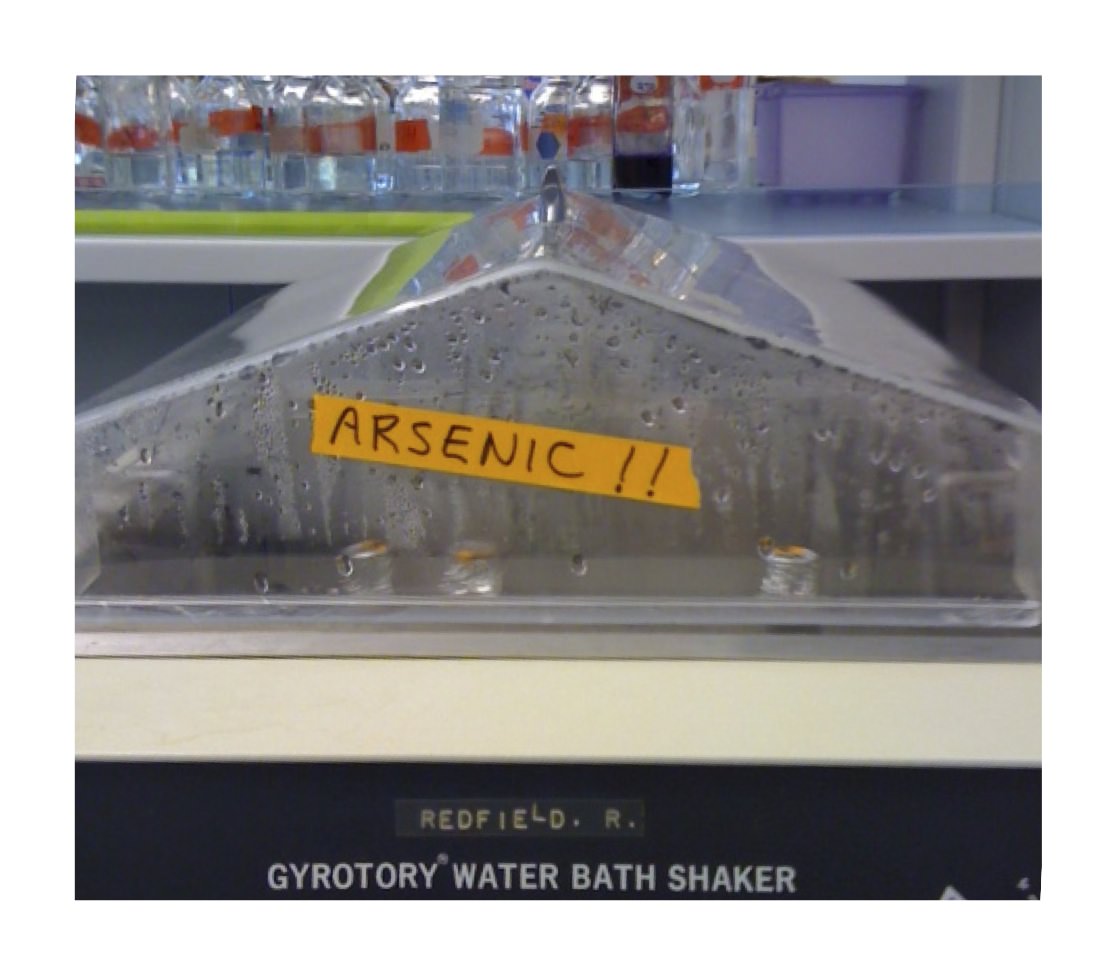[/caption]
One of the most vocal and ardent critics of the so-called ‘arsenic life’ experiment which was published in December 2010 was biologist Rosie Redfield from the University of British Columbia in Vancouver. The science paper by NASA astrobiologist Felisa Wolfe-Simon and her team reported that a type of bacteria in Mono Lake in California can live and grow almost entirely on arsenic, a poison, and incorporates it into its DNA. Redfield called the paper “lots of flim-flam, but very little reliable information.” Her opinion was quickly seconded by many other biologists/bloggers.
Redfield has been working on replicating the experiment done by Wolfe-Simon, and doing in her work in front of the world, so to speak. She is detailing her work in an open lab notebook on her blog. So far, she reports that her results contradict Wolfe-Simon et al.’s observations.
To date, Redfield is finding that the bacteria, called GFAJ-1, is not living and growing in arsenic, but dying. Redfield says her work refutes that cells from the GFAJ-1 could use arsenic for growth in place of phosphorus, and when arsenic was added to the low-phosphorus medium in which the bacteria was living, the bacteria was killed. Additionally, in other test viles, the growth properties Redfield is finding for GFAJ-1 don’t match those reported by Wolfe-Simon and her team, which claimed that the bacteria could not grow on a low concentration of phosphorus, and that the bacteria could grow on arsenic in the absence of phosphorus.

Redfield’s two major early criticisms of the original paper were that the authors had not ruled out the possibility that the bacteria were feeding on phosphorus contaminating their growth medium; and that the bacterial DNA was not properly purified, so that the arsenic detected might not actually have been in DNA.
An article in Nature reports that other researchers also working on replicating the experiment with GFAJ-1 laud Redfield’s efforts, but say it is too early to conclude that she has debunked the original work.
Additionally, one problem is that Redfield she did not replicate the experiment exactly, as she had to add one nutrient not used by the authors of the original arsenic life paper in order for the bacteria to grow.
This is not the first time scientists have written open notebooks during the replication of controversial findings, but it might be one of the more notable, given the amount of media attention the arsenic life paper received.
Redfield is also hoping that her work will highlight the benefits of open notebook-type research.
You can read Redfield’s blog about her work at this link.
Sources: Nature, Redfield’s blog.

